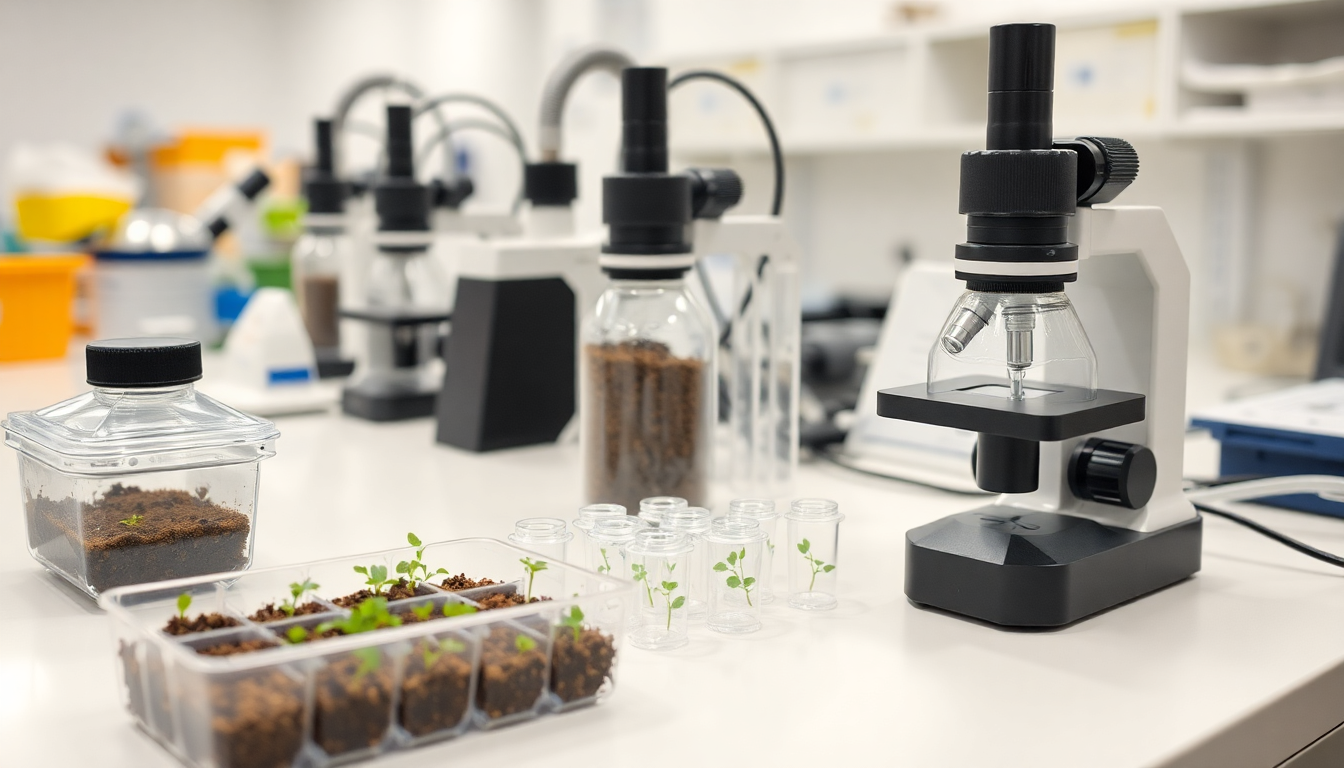Soil Analysis in 2025: Understanding the Effects of PAHs, PCBs and Heavy Metals on Your Environment

Introduction
In 2025, soil testing will become a crucial issue for protecting our environment and our health. Polycyclic aromatic hydrocarbons (PAHs), polychlorinated biphenyls (PCBs), and heavy metals are contaminants of concern that can have serious consequences on the quality of our ecosystem. This article aims to provide you with an in-depth understanding of these substances, their impact, and the importance of performing soil testing. We will also cover diagnostic processes, relevant case studies, practical advice, and the latest news in the field.
Why is Soil Analysis Crucial?
Soil quality directly influences the health of ecosystems and, by extension, human health. Here are some key reasons why regular soil testing is important:
- Identification of hazardous contaminants: Analyses make it possible to detect the presence of harmful substances that can affect human and animal health.
- Local Environmental Impact Assessment: Understanding contaminant concentrations helps assess risks to biodiversity and water resources.
- Informed Land Management Decision Making: Analysis results enable landowners and managers to make informed decisions regarding land use.
- Prevention of public health risks: Early identification of contaminants can prevent major health problems related to environmental exposure.
- Regulatory Compliance: Many regulations require soil testing to ensure the safety of sites, especially those with a history of industrial use.
Main Contaminants: PAHs, PCBs and Heavy Metals
Currently, several contaminants are of particular concern in soil analyses:
- PAHs (Polycyclic Aromatic Hydrocarbons) : These compounds, often resulting from the incomplete combustion of organic matter, are widely present in industrial sites, urban areas, and agricultural soils. PAHs are known for their carcinogenic properties and their ability to accumulate in living organisms.
- PCBs (Polychlorinated Biphenyls) : Although their use has been banned in many countries, PCBs continue to be detected in soils due to their persistence in the environment. They are linked to various health problems, including neurotoxic effects and immunotoxicity.
- Heavy Metals : Elements such as lead, mercury, cadmium, and arsenic can accumulate in soils, often due to industrial activities, intensive agriculture, and urban pollution. These metals are toxic to wildlife, and their presence can also affect the food chain.
Diagnostic Process
Conducting a soil analysis requires a methodical and rigorous process. Here are the typical steps involved:
- Sampling: This involves taking soil samples from various points in the study area to obtain a true representation of potential contamination. It is crucial to use standardized methods to ensure the validity of the results.
- Laboratory Analysis: Samples are then sent to a specialized laboratory where various tests are performed to detect the presence of PAHs, PCBs, heavy metals, and other contaminants. Analysis methods may include chromatography, mass spectrometry, and other advanced techniques.
- Interpretation of results: The data obtained are analyzed to assess contamination levels. This involves comparing the results with regulatory standards to determine the severity of the contamination.
- Report and recommendations: Finally, a detailed report is prepared, including recommendations on the measures to be taken, whether it be decontamination, continuous monitoring or other interventions.
Case Studies
Concrete case studies illustrate the importance of soil testing in contamination management. Here are two significant examples:
- Industrial site at risk: A former chemical manufacturing site was analyzed and revealed alarming levels of PCBs. Thanks to this analysis, remediation measures were put in place, restoring soil quality and making the area safe for future use.
- Contaminated agricultural area: In an agricultural region, tests revealed elevated levels of heavy metals, including lead and cadmium, due to past pesticide use. The results led to the implementation of sustainable agricultural practices and restrictions on the cultivation of certain foods.
Practical Advice for Owners
If you own land or are considering purchasing property, here are some practical tips:
- Carry out regular analyses: Especially if your property is located near former industrial or agricultural areas.
- Consult experts: Call on professionals to interpret the results and advise you on the actions to take.
- Educate yourself on regulations: Familiarize yourself with local laws regarding soil quality and the obligations that come with them.
- Participate in awareness programs: Get involved in local initiatives aimed at raising public awareness of environmental issues and the need for sustainable soil management.
Sector News
In 2025, new regulations were put in place to strengthen the management of contaminated soil. These laws aim to protect the environment and ensure public safety. Governments and environmental organizations are also encouraging the use of innovative technologies for the remediation of contaminated sites. Staying informed about regulatory developments and new technologies is crucial for anyone concerned with soil quality.
Conclusion
Soil testing in 2025 is more important than ever to understand the effects of PAHs, PCBs, and heavy metals on our environment. By conducting regular testing and taking appropriate action, you can contribute to a healthier future for your community. To learn more about soil testing and get personalized advice, please contact Pouryère . Together, we can make a difference and protect our environment.



